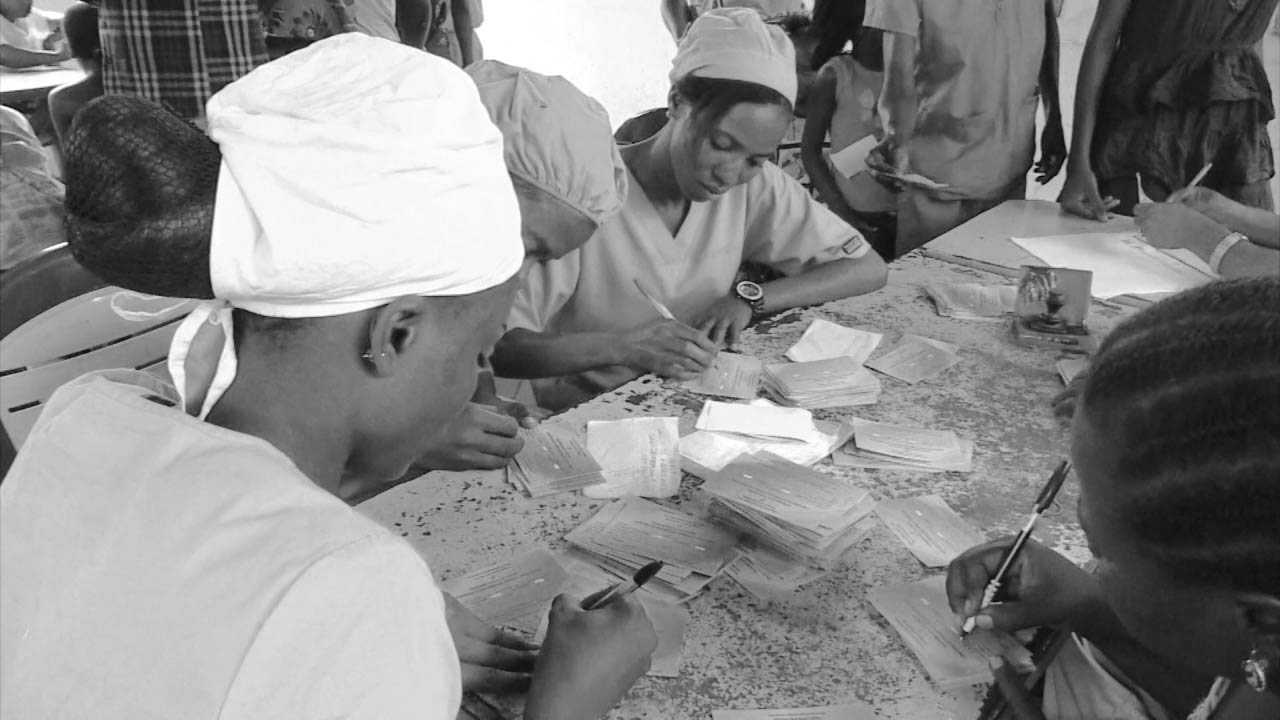Yellow FeverFlavivirus

Symptoms and Causative Agent
Yellow fever is a viral disease spread to humans, as well as between certain other primates and humans, by the bite of infected mosquitoes. The virus is called simply Yellow fever virus, named for the jaundice that affects some patients, and belongs to the virus family Flaviviridae.
Yellow fever is endemic in areas of Latin America and Africa, while imported cases have appeared throughout the world. Globally, the disease infects about 200,000 people per year, causing fever, chills, nausea, vomiting, muscle pain, and headache, and has no cure.
Transmission
Yellow fever is spread to humans by infected mosquitoes. It cannot be transmitted directly from person to person.
There are three main types of the disease:
- Sylvatic yellow fever (also known as “jungle yellow fever”) occurs when the disease is passed from monkeys infected by wild mosquitoes to humans. This can occur when humans enter jungle areas.
- Intermediate yellow fever—the most common type of outbreak in modern Africa—results when semi-domestic mosquitoes (which can infect both monkeys and humans) are present in an area where they commonly come into contact with humans.
- Urban yellow fever occurs when the Aedes aegypti species of domestic mosquito transmits the virus between humans, without transmission via other primates.
Treatment and Care
There is no direct treatment for yellow fever. Supportive care may be provided, including efforts to reduce pain and lower the fever associated with the disease. Medications used for pain relief must be carefully selected, as some nonsteroidal anti-inflammatory drugs (including aspirin) may increase bleeding risk.
Complications and Mortality
While many yellow fever patients recover after 3-4 days of symptoms, approximately 15% enter a second phase of the illness after a remission. This second phase includes a return of high fever, as well as jaundice, abdominal pain and vomiting, bleeding from the mouth, nose, eyes, or stomach, and deteriorating kidney function. As many as half of the patients who experience the second phase may die. Yellow fever kills 30,000 people globally each year.
Prevention: Anti-Mosquito Methods, Available Vaccines, and Vaccination Campaigns
The first confirmed outbreaks of yellow fever in the American colonies occurred in Charleston, Virginia, and Philadelphia, Pennsylvania, in 1699. A Quaker diarist in Philadelphia wrote that there were “few houses, if any, free of the sickness.” A 1793 outbreak in Philadelphia killed about 10% of the city’s population. Eventually, the colonists discovered that yellow fever was somehow imported by ships from the West Indies and implemented quarantine policies. However, it was not until 1900 that U.S. Army researchers pinpointed mosquitoes as the transmission vector for the disease.
Fortunately for the human race, yellow fever cannot be passed directly from person to person. To acquire the disease, an individual must be bitten by an infected mosquito—and a certain time must have passed since the mosquito first acquired the virus itself. This allows a relatively small window of opportunity for the virus to spread, although that window grows substantially in locations with large unprotected populations and significant mosquito activity.
Unfortunately, once a person has been infected with yellow fever, there is no treatment for the disease beyond standard supportive care, and trying to make the patient as comfortable as possible. Thus, anti-mosquito methods and vaccination are the best weapons available against the disease.
The yellow fever vaccine provides protection for 30 years or more—possibly for life—and for 95% of those vaccinated, offers protective immunity against the disease within a week.
Yellow fever vaccination is typically performed only in areas where the disease is endemic, but is available (and sometimes required) for those traveling to regions where the virus is still widespread. The most recent statistics from the World Health Organization (WHO) showed that immunization coverage was approximately 41% in 2013 in countries considered at risk for outbreaks. This is a vast increase from 1988, when the disease was at its modern peak, with more than 5 million cases reported globally and immunization coverage of less than 5%. WHO cautions, however, that prevention of outbreaks in affected regions requires 60-80% coverage of an at-risk population.
The World Health Organization also leads a yellow fever vaccination effort, called the Yellow Fever Initiative, supported both by national governments and UNICEF. It is particularly focused on 12 African countries with high rates of the disease, and implements mass vaccination campaigns in areas of high risk for people nine months of age or older. The group also performs surveillance work and responds to outbreaks. More information is available at the WHO website.
Sources
- Gershman, M., Staples, J.E. Infectious diseases related to travel: Yellow fever. Pink Book. Centers for Disease Control and Prevention. 2015. Accessed 01/25/2018.
- World Health Organization. Global immunization data. (125 KB) Accessed 01/25/2018.
Last update 9 April 2022